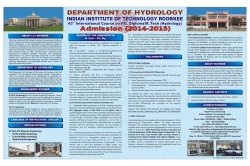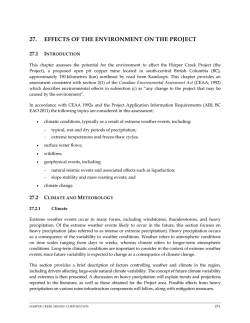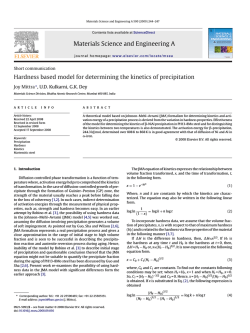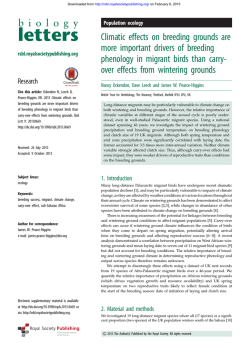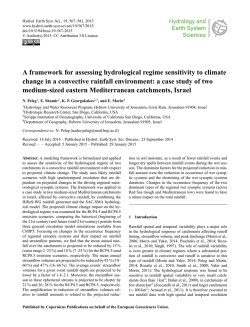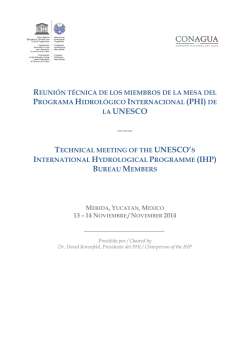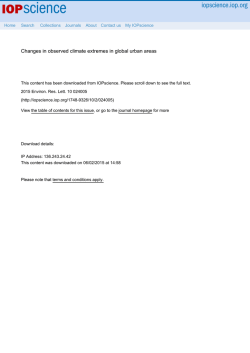
Engineering Hydraulogy
Civil Engineering Hydrology HYDROLOGY TABLE OF CONTENTS Chap No DESCRIPTION P NO 1 Introduction 2-4 2 Measurement of Precipitation 5 – 15 3 Abstractions form Precipitation 16 – 27 4 Surface Water Hydrology (Runoff) 28 – 41 5 Stream Flow Measurement 42 – 54 6 Surface Water hydrology 55 – 65 (Hydrographs) 7. Floods 66 – 72 8 Flood Routing 73 – 80 9 Ground water 81 – 94 10 Level 1 95 – 106 11 Level 2 107 – 121 12 Level 3 122 - 130 The Gate Coach All Rights Reserved 28, Jia Sarai, New Delhi-16, 26528213, -9998 1 Civil Engineering Hydrology Chapter 1 Introduction Hydrology is an earth science. It encompasses he occurrence, distribution, movement and properties of water of earth. Hydrological cycle The hydrological cycle is a global sun driven process whereby water is transported form the oceans to the atmosphere to the land and back to the sea. The hydrology cycle is usually described in terms of six major components: precipitation (P) infiltration (1). Evaporation (E). Transpiration (T) infiltration (1), G round Water flow (G). for computational purposes, evaporation and transpiration are sometimes lumped together as evapotratpiration (ET) figure I.I define these components and illustrates the paths they define tin the hydrological cycle. NOTE: A convenient starting point to describe the cycle is in the oceans. Evaporation is the transfer of water from a liquid state to a gaseous state, i.e., it is the conversion of liquid to the vapour phase. Precipitation is the deposition of water on the earth's surface in the form of rain, snow, hail, frost and so on. Interception is the short-term retention of rainfall by the foliage of vegetation. Infiltration is the movement of water into the soil of the earth's surface. Transpiration is the soil moisture taken up through the roots of a plant and discharged into the atmosphere through the foliage by evaporation. Percolation is the movement of water from one soil zone to a lower soil zone. Storage is the volume of water which gets stored in natural depressions of a basin. Runoff is the volume of water drained by a river at the outlet of a catchment. Residence Time Average duration of a particle of water to pass through a phase of the hydrological cycle is known as the residence time of that phase. Volume of water in a phase Volumeof water in a phase Residence time = Average flow ratein that phase The Gate Coach All Rights Reserved 28, Jia Sarai, New Delhi-16, 26528213, -9998 2 Civil Engineering Hydrology Average flow rate in that phase Average residence time of ocean is larger than that of global ground water. Catchment Area A catchment area is an area of land where surface water from rain and melting snow or ice converges to a single point, usually the exit of the basin, where the waters join another water body. Such as a river, lake, reservoir, sea. or ocean. In closed catchment the water converges to a single point inside the basin, known as a Sink, which ma) be a permanent lake, dry lake, or a point where surface water is lost underground. The catchment acts as a funnel by collecting all the water within the area covered by the catchment and channeling it to a single point. Each catchment area is separated topographically from adjacent catehment area by a geographical barrier such as a ridge, hill or mountain. The line which divides the surface runoff between two adjacent river basins is called the topographic waterdived, or the watershed divide, or simply the divide. The Hydrological Budget For a given catchment in a time interval t , Inflow - Outflow7 = Storage [continuity equation] This continuity equation expressed in terms of various phase of hydrological cycle is called water budget equation/hydrological budget equation. For surface flow: P + R1 + Rg – R2 – Es – Ts – I = Ss storage ………….. A P = ppt. P = ppt. RI = Surface water inflow Rg = ground water appearing as surface water ES = Evaporation Ts = Transpiration I = Infiltration The Gate Coach All Rights Reserved 28, Jia Sarai, New Delhi-16, 26528213, -9998 3 Civil Engineering Hydrology For underground flow;1 + G1 – G2 – Rg – Eg – Tg = Sg storage ……………… B I = Infiltration G1 = Ground water inflow G2 = Ground water outflow Rg = Ground water appearing as surface water Eg = Evaporation Tg = Transpiration Combined hydrological budget (water budget eq.) is obtained by addition eq. (A) and (B) P – (R2 – R1) – (Es – Eg) – Ts + Tg) – (G2 – G1) = (Sg Sg ) = P - R – E – T – G = S water budget equation P = precipitation R = Net runoff E = Net transpiration T = Net transpiration G = Net ground water flow S = Net storage increase The Gate Coach All Rights Reserved 28, Jia Sarai, New Delhi-16, 26528213, -9998 4 Civil Engineering Hydrology Chapter 2 Measurement of Precipitation The total amount of precipitation on a given area is expressed as the depth over the horizontal projection of the area. Thus 1 cm of rainfall over a catchment area of 1 km 2 represents a volume of water equal to 104 m3. Terms such as pluviometer, ombrometer and hyetometer are also sometimes used to designate a raingauge. Types of Gauges The various types of precipitation gauges used are broadly classified as (a) non-recording gauges, and (b) recording gauges. Non-Recording Gauges The non recording gauge extensively used in India is the Svmons' raingauge. It is installed in an open area on a concrete foundation. The distance of the rain gauge from the nearest object should be at least twice the height of the object. It should never be on a terrace or under a tree. The gauge may be fenced with a gate to prevent animals and unauthorized persons from entering the premises. Measurements are to be made at a fixed time, normally at 08:30 hrs. In case of heavy rainfall areas, measurements are made as often as possible. The Gate Coach All Rights Reserved 28, Jia Sarai, New Delhi-16, 26528213, -9998 5 Civil Engineering Hydrology Recording Gauges The recording gauges produce a continuous plot of rainfall against time and provide valuable short duration data on intensity and duration of rainfall for hydrology analysis of stroms, the commonly used recording gauges Tipping bucket type Weighing type, and Natural syphon type The weighing type is suitable for measuring all kinds of precipitation (rain,, sleet etc.). Tipping-Bucket Type The catch from the funnel falls onto one of a pair of small buckets. These buckets are so balanced that when. 0, 25 mm of rainfall collects in one bucket, it tips and brings the other one in position. The tipping actuate an electrically driven pen to trace a record on clockwork-driven chart The record from tipping bucket gives dat on the intensity of rainfall. The main advantage of this type of instrument is that it gives an electronic puis output that can be recorded at a distance from the rain gauge. Weighing-Bucket Type The catch from the funnel empties into a bucket mounted on a weighing scale. The weight of the bucket an its contents are recorded on a clock work-driven chart. This instrument gives a plot of the accumulate* rainfall against the elapsed time, i.e. the mass curve of rainfall (accumulated precipitation against time Natural Syphon Type This type of recording rain-gauge is also known as float type gauge. Here the rainfall collected by a funnt shaped collector is led into a float chamber causing a float to rise. As the float rises, a pen attached to the hot. through a lever system records the elevation of the float on a rotating drum driven by a clockwork mechanism A syphon arrangement empties the float chamber when the float has reached a pre-set maximum level which resets the pen to its zero level. This type of raingauge is adopted as the standard recording type rain gaug in India. This type of gauge gives a plot of the mass curve of rainfall. The Gate Coach All Rights Reserved 28, Jia Sarai, New Delhi-16, 26528213, -9998 6 Civil Engineering Hydrology Other Precipitation Measurement Method Storage Gauges in a desert or a mountainous terrain, storage gauges are use to measure total seasonal precipitation. These gauges are read monthly, seasonally, or whenever it is possible to inspect the stations. Telemetering Rain Gauges These rain gauges are of the recording type and contain electronic units to transmit the data on rainfall to base station both at regular intervals and on interrogation. The tipping -bucket. Type raingauge. Being ideal suited. Telemetering gauges are of utmost use in gathering rainfall data from mountainous and general inaccessible places. Radar Measurement of Rainfall Radar permits the observation of the location and movement of areas of precipitation in the atmosphere; and certain types of radar equipment can yield estimates of rainfall rates over areas within the range of the radar. Observations by Satellites Satellite images can be used for estimating precipitation over areas ranging from the global to the very local scale in real or near-real time. This complements the conventional precipitation measurements in areas of sparse rain gauge networks and can improve the accuracy of estimating precipitation for short time periods (several hours). Rain Gauge Network For proper assessment of water resources, a good network of rain gauges is a must. More is the variability of rainfall; denser should be the rain gauge network. As per the IS: 4987-1968, the recommended rain gauge network density is as follows: In plains On in every 520 km2 Moderately elevated area (av. elevation up to 1000 m) One in 260 to 390 km2 Hilly areas One in 130 km2 The Gate Coach All Rights Reserved 28, Jia Sarai, New Delhi-16, 26528213, -9998 7 Civil Engineering Hydrology As far as possible. 10 percent of the rain gauge stations should be equipped with automatic rain gauges. Adequacy of Raingauge Station Number of raingauge stations for an area to give necessary average rainfall with certain percentage of error can be obtained as follows: (P1 P2 ... Pn n Pl is precipitation magnitude of the 1st station and so on and n is the total-number of raingauge stations .in. the catchment. Step 1: Calculate mea rainfall, Pm Pm Step 2: Calculate the standard deviation, (P1 Pm )2 (P2 Pm )2 ...(Pn Pm )2 n 1 Step 3: Calculate coefficient of variation, Cv CV / Pm Step 4: Optimal number of stations, N 2 C N v Where, is the allowable degree of error in the mean rainfall (in fraction). Step 5: Additional number of raingauge station required = N – n in routine hydrological investigation, error of estimate should not exceed 10% i.e. = 0.1 Normal Precipitation The normal rainfall is the average value of rainfall of a particular date, month or year over a specified 30-ye; period Normal rainfall is used to find out the missing data a certain raingauges Before using the rainfall records of a station it is necessary to 1st check the data for continuity and consistency Continuity means availability of continuous record of previous rainfall and consistency means that rainfall of previous years should be consistent with the present environmental and land use conditions (like if there A jungle in particular area which did not axis 15 years ago then previous records will not be consistent with current record The Gate Coach All Rights Reserved 28, Jia Sarai, New Delhi-16, 26528213, -9998 8 Civil Engineering Hydrology Estimation of Missing Data Sometimes a station has a break in record due to absence of observer or failure of the instrument. It is then necessary to estimate that missing data. To estimate the data, three or more stations close to this station are selected. Following are the different ways of calculating the missing data. Arithmetic Mean Method If the normal precipitation at each of these selected stations is within 10% of that for the station with missing data, then simple arithmetical mean of the precipitation of those stations will give the value of the missing station. P P P ... Pm Px 1 2 3 m Normal ratio method If normal precipitation at any of these selected stations is above 10% of that for station with missing data then Px 1 P1 P2 P ... m Nx m N1 N2 Nm Where P1 = Precipitation of 1st station N1 = Normal precipitation of the 1st station m = No of additional station chosen Px = Precipitation (missing data) Nx = Normal precipitation of the station at which data is missing Inconsistency of Records Some of the common causes for inconsistency of the records are: Shifting of raingauge station to a new location Neighborhood of the station undergoing a marked change Change in the ecosystem due to calamities such as forest fires, landslides etc. Occurrence of Observational error from a certain date Inconsistency of record is corrected bv using double mass curve Technique. Thus on correction, the previous record becomes consistent with the present day environmental and land use condition. The Gate Coach All Rights Reserved 28, Jia Sarai, New Delhi-16, 26528213, -9998 9
© Copyright 2026
